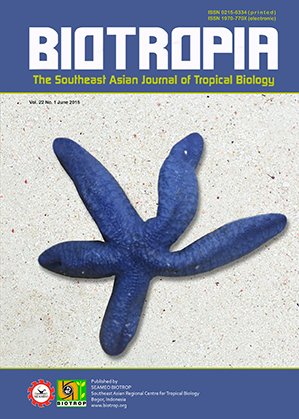
Tags
Mortality and Ingrowth Pattern of Dipterocarps in Forest Recovery in East Kalimantan
Content Language : English

In primary and logged-over natural forest, the stand conditions such as stand structure, mortality and ingrowth rates will vary according to the species characteristic. The study objective was to determine mortality and ingrowth/recruitment rates to formulate biometric characteristic variability of dipterocarps forest in logged-over forests based on time series data. The study site was located in Labanan, East Kalimantan Province. Permanent measurement plots within logged-over forest were located to represent threedifferent logging techniques, i.e., (a)reduced impact logging with limit diameter 50 cm (RIL 50), (b) RIL 60, (c) conventional logging and (d) primary forest as control. Total plot permanent area about 48 ha that measured 2 years periodically along 17 years after logging. Data analysis of stands were divided into two major groups, i.e., Dipterocarps and non Dipterocarps. The mortality rates on logged forest were 2.5-29.3% ha-12yr-1 then very closed to primary forest after the 5th year after logging. While the ingrowth rate in logged forest were 1.3 – 21.3% ha-12yr-1 that have higher value than the primary forest along 17 years. The mortality and ingrowth rates fluctuation of Dipterocarps species group having different pattern with non Dipterocarps.
Link

This work is licensed under a Creative Commons Attribution-NonCommercial-NoDerivatives 4.0 International License.
